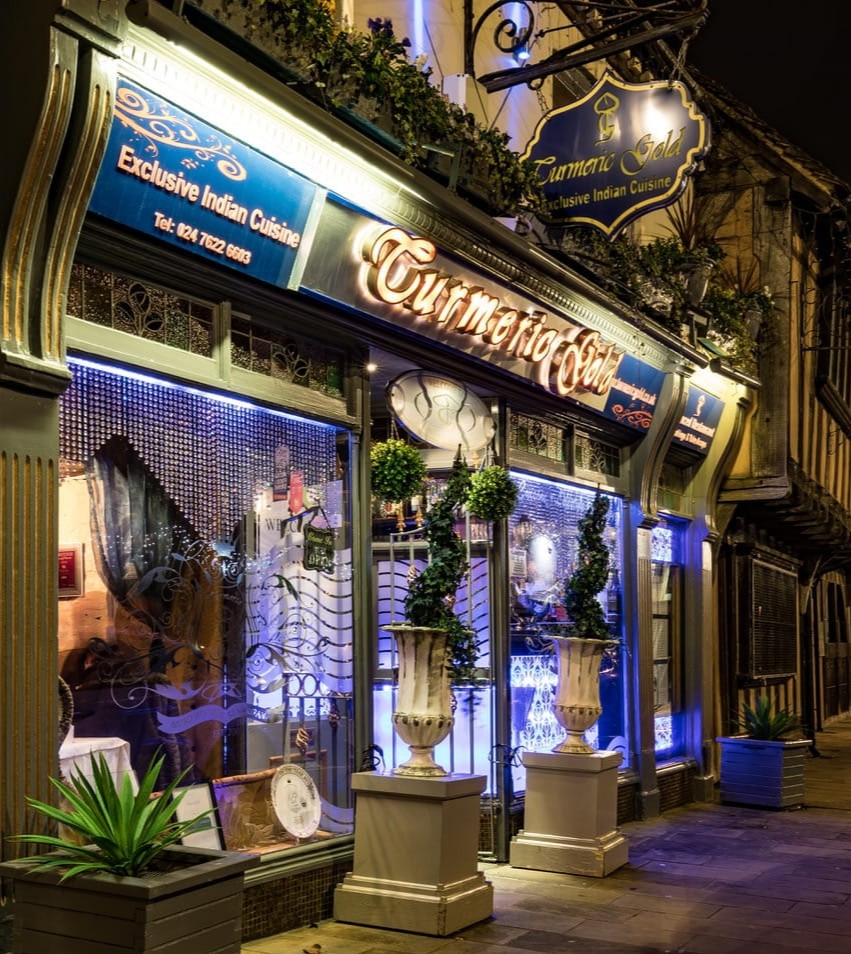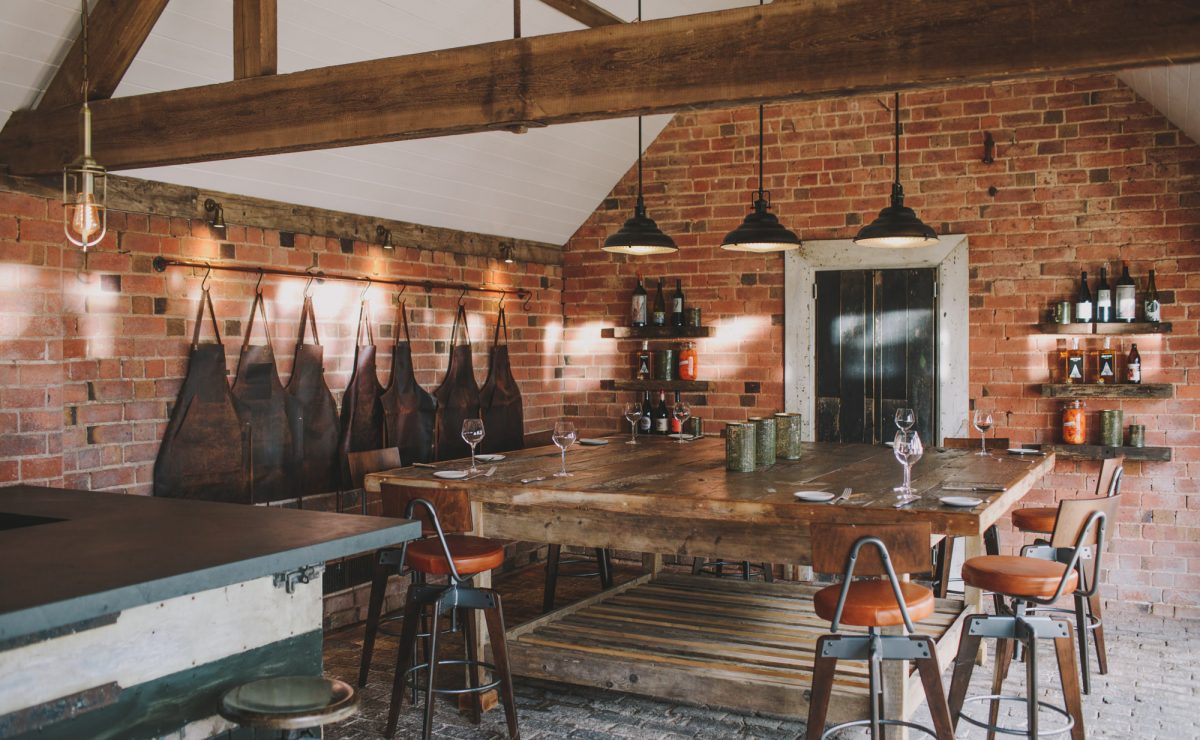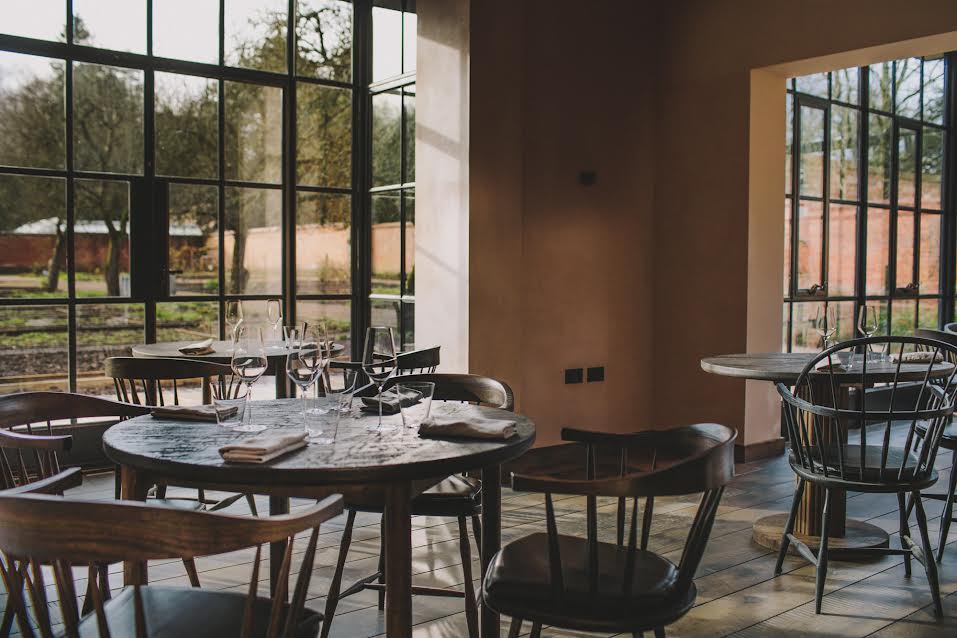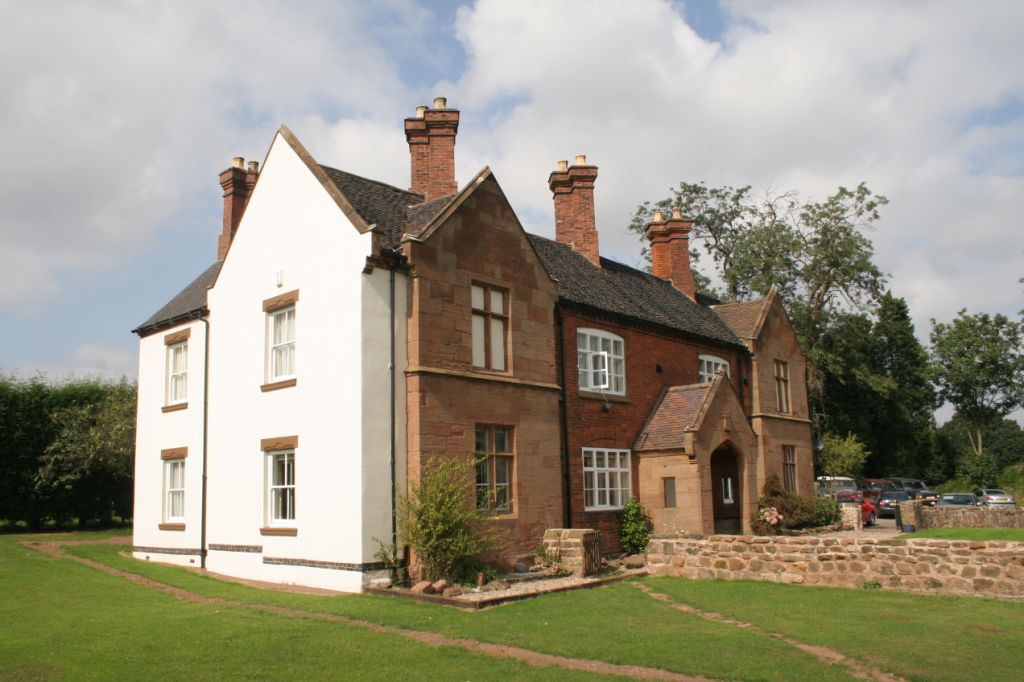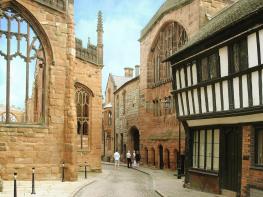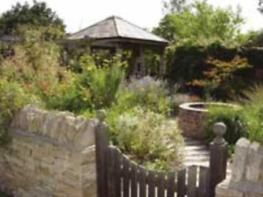Ashleigh House has been offering quality guest accommodation for three decades. Coventry city…
A Coventry city tour

3.75 miles (6kms)
About the walk
This short but inspiring tour guides you around the most historic parts of Coventry’s centre, starting at Old St Michael’s Cathedral. This became a cathedral in 1918, as a replacement for St Mary’s, which had been abandoned after the Reformation. Unfortunately, it was severely damaged in the bombing raid of 14 November 1940, when so much of the city was destroyed, and it’s shell remains as a memorial to that dark time.
Basil Spence was the the clear winner of the 1950 competition to design a new cathedral, and his stark modern design has been the subject of much controversy over the years. It was a radical new approach and a complete break away from traditional style. The new cathedral was finally consecrated in May 1962 in the presence of Queen Elizabeth II, and you can compare the older style with the more modern during your walk.
St Mary’s Guildhall
Another impressive and important building which is well worth exploring is St Mary’s Guildhall on Bayley Lane. After fleeing from London during the Wars of the Roses in 1456, King Henry VI and Queen Margaret spent most of their time in Coventry, where St Mary's Guildhall became the prime venue for entertaining royalty and their court. Amongst its many functions, the guildhall has also been extensively used as a theatre. Its raised dais made the hall suitable for public performance, and over the years it became a regular venue for visiting players. William Shakespeare is known to have performed here as a young actor in 1580. Shakespeare's last visit to Coventry was in 1608, two years before his death at the age of 52, and as you walk past the guildhall you can see a statue of the Bard above the main archway.
Calling a husband’s bluff
Lady Godiva is one of the more remarkable names associated with Coventry. Godiva was the wife of Leofric, Earl of Mercia, one of the most powerful Anglo-Saxon noblemen in 11th-century England. Leofric became so exasperated by Godiva's endless appeals to reduce Coventry's heavy and punitive taxes that he declared he would do so if she rode naked through the crowded marketplace. Boldly, Godiva did exactly that – with her flowing hair covering all of her body except her legs. You will see a statue of her on her horse as you pass through the main shopping precinct.
A medieval masterpiece
Along the walk is Cheylesmore Manor House, which dates from the 13th century and has been lovingly renovated over the centuries by the City of Coventry. It is an outstanding example of a house from this period. It once belonged to Queen Isabella (the wife of Edward II) and in 1338 was passed to her grandson, Edward the Black Prince.
Walk directions
From the tourist information office, go left down Bayley Lane, past St Mary’s Guildhall. Turn right into Earl Street, then left into Jordan Well. Cross the road and go right, down Whitefriars Street. At the bottom just before the car park, go right along cobbled Whitefriars Lane, to pass beneath Whitefriars Gateway.
Turn right into Much Park Street, then take the first left turn, along St John’s Street to Little Park Street. Turn right down here, then left in front of the Tudor-style Council House, built in 1917. Continue left along the High Street, past the Cathedral Lanes Shopping Centre to reach the Lady Godiva statue of 1949, by Sir William Reid Dick.
Walk back towards the High Street and go right down Greyfriars Lane. After the car park is the row of restored almshouses, Ford’s Hospital. Continue along Greyfriars Lane and take the pathway to the right of the 230-ft (70m) Greyfriars Spire – all that remains of the 14th-century Church of Christ Church – to New Union Street. Go left and cross at the crossing through the Manor Yard archway, to Cheylesmore Manor.
At Manor House Drive go right, and just past Quadrant Hall, go right again down a footpath to Warwick Road. Cross Warwick Road and turn right to the shopping precinct at Bull Yard. Go left into Shelton Square, then bear right and continue along Market Way into the centre of the main shopping area.
By the fountain, go left into Lower Precinct. At the traffic island by St John’s Church, cross the road and walk down Spon Street to admire the row of medieval buildings. At the end retrace your steps past St John’s Church, and turn left into Hill Street. On your left is the Old Bablake School, founded in 1560 for the education of poor boys of Coventry. Go right along Bond Street and through the archway by Olan Mills, left into Corporation Street. Turn left into Upper Well Street, then right into Lamb Street. Turn left to a footbridge over The Ringway that leads to the Canal Basin.
Retrace your steps over the footbridge and walk down Bishop Street. Turn left along Tower Street, right down to Cook Street, and left alongside the rear of the Transport Museum. After going beneath 15th-century Cook Street Gateway, turn right and stroll through Lady Herbert’s Garden to Hales Street by the Swanswell (Priory) Gate. Pass in front of the Transport Museum right along Hales Street to a junction. Turn left up The Burges, then left around Ironmonger Row and cross the road. Go right and then left into Priory Row and down between the New and the Old Cathedrals to return to the tourist information office.
Additional information
Street pavements
Historic Coventry
On lead at all times
AA Street by Street: West Midlands
Any park-and-ride car park, then travel into city centre by bus
Library Building in Smithford Way
WALKING IN SAFETY
Read our tips to look after yourself and the environment when following this walk.
Find out more
Also in the area
About the area
Discover West Midlands
After Greater London, the West Midlands is the UK’s biggest county by population, and after London, Birmingham is the UK’s largest city. There’s a lot to seek out here – it has a vibrant culture, with exceptionally good nightlife. Coventry used to be more important than Birmingham, until the 18th century when the Industrial Revolution started and Brum forged ahead.
Apart from Lady Godiva, Coventry is best known for its cathedrals. The medieval parish church became a cathedral in 1918, but the Blitz on Coventry in 1940 left only the spire and part of the walls. After the war, it was decided to build a new cathedral alongside linked to the ruins.
Dudley was one of the birthplaces of the Industrial Revolution, and this history is reflected in its architecture and the Black Country Living Museum, a recreation of an industrial village, with shops and a pub, cottages and a chapel. Stourbridge is also worth a visit, mainly due to its involvement in glassmaking, which has been going on since the 17th century, and is still a part of the town’s culture; there’s a glass museum and a bi-annual glass festival.
Nearby stays
Restaurants and Pubs
Nearby experiences
Recommended things to do
Why choose Rated Trips?
Your trusted guide to rated places across the UK
The best coverage
Discover more than 15,000 professionally rated places to stay, eat and visit from across the UK and Ireland.
Quality assured
Choose a place to stay safe in the knowledge that it has been expertly assessed by trained assessors.
Plan your next trip
Search by location or the type of place you're visiting to find your next ideal holiday experience.
Travel inspiration
Read our articles, city guides and recommended things to do for inspiration. We're here to help you explore the UK.





